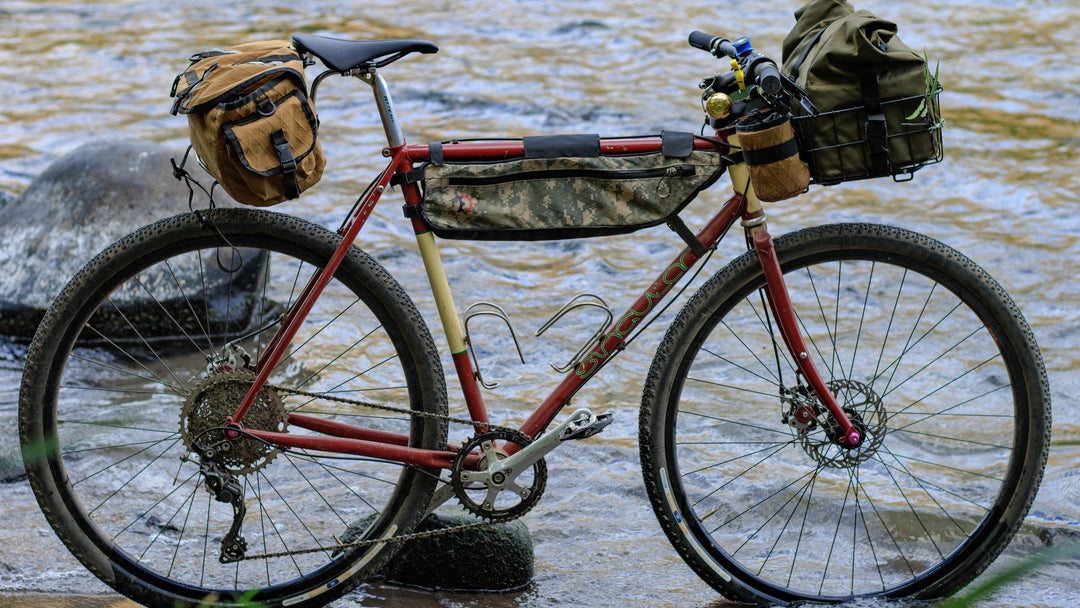CNOC's Answer To Disposable Plastics

I like rocks. I like them so much I studied them in college. I’m not sure what it is about geology that is so appealing to me, but I can sit and look at rocks for hours. Perhaps my enthusiasm for geology is what made me so enthralled with the outdoors, or perhaps my passion for the outdoors led to my love of geology? Just think, getting to spend time outside, clambering up mountains and through streams, and being graded on it! At any rate, I like rocks and I like geology.

Geology by nature, doesn't change much or rapidly. The geologic time scale is counted in millions and billions of years. So, when I read that scientists were pursuing the creation of a new geologic epoch - that measure of geologic time scale - I got pretty excited (this is exciting, trust me…). The most recent epoch is the Holocene, primarily defined by the development of agriculture and dating back to the end of the last ice age, about 10,000 - 11,000 years ago.
The Age Of Plastics
The newest age, still being debated by the scientific community, is known as the Anthropocene Epoch. The word Anthropocene is derived from the Greek words anthropo for “man” and cene for “new”. This newest age, or epoch, is considered to have started around the middle of the 20th century, and is marked by an exponential increase in human activity and its impact on the planet. Key markers for this proposed geologic time period are nuclear tests, plastic pollution and domesticated chickens. Some scientists have called it the Age of Plastics - not nearly as exotic as the age of dinosaurs, but much more scary.
According to some estimates, 40% of all plastics consumed around the world are single use. Single use plastics are things like drinking straws, plastic bags to carry your groceries, a wrapper on a candy bar, or a water bottle purchased from a vending machine. Single use plastics are made primarily from fossil fuel based chemicals (dinosaurs!), and are meant to be disposed of immediately after use. The use of plastics around the world has skyrocketed over the last few decades. Since the 1950s, 8.3 billion metric tons of plastics have been produced - half of that has come in the last 15 years alone. One million plastic bottles are purchased every minute worldwide, and each year, 300 million tons of plastics are produced, half of which is single use. 300 million tons is nearly equivalent to the total weight of the human population.
Single-Use Plastics
But it's all recyclable right, so what's the big deal? While it is true that many plastics are easily recyclable, most are simply not recycled. Fifty percent of plastics, whether they are recyclable or not, wind up in a landfill. Only about 10% of plastics are recycled and the remainder are left in the environment. A single-use plastic bottle takes around 450 years to break down, and when it breaks down, it doesn’t disappear. It transforms into smaller and smaller micro-plastics that find their way into our water system, and ultimately in our oceans. Millions of tons of plastic is floating in the ocean in giant islands of plastic trash. The effects of plastic trash on wildlife is devastating, with millions of creatures dying due to ingesting or being caught in plastic refuse. The long-term impact of these floating plastic islands is not yet fully understood, but I think it is safe to say that it isn’t sustainable, or healthy for the vitality of our oceans.

Single use plastic is a stark example of our throw-away culture. Another example where trash, throw-away plastics and cups are beyond acceptable are at community events such as marathons, ½ marathons, 5 & 10k races. If you’ve ever participated in a race or volunteered at a marathon, you’ve seen the mountains of cups and plastic bottles that litter the course and aid stations. The Boston marathon is the world’s oldest annual race, and in 2017 over 30,000 people participated. It is estimated that over 60,000 single use plastic bottles were consumed, 1.4 million cups were used and the event generated nearly 10,000 bags of trash, or one bag for every 3 participants. While the Boston marathon is an extreme example, there are thousands of smaller, but similar events around the world each year, and they tend to generate an outsized measure of waste.
The CNOC Answer
Investing in and using more durable and reusable products in our everyday lives and during special events is one way to reverse this alarming trend. Nalgene is a household name, and heavy-duty aluminum bottles are becoming a common sight in school-kids backpacks and on office desks. These make for reliable and long-lived solutions for use in more domestic settings.
As backpackers, we are interested in durability, ease of use, and weight. A Nalgene bottle is nearly bulletproof, but that durability comes at a cost - they are heavy, and take up unyielding space in a backpack. The lightweight answer many thru-hikers favor is to use, and reuse (perhaps too many times) a SmartWater bottle. Their size and shape are great for getting in and out of a side pocket, and they are durable. Ultimately, however, they are designed to be single-use, and eventually find their way (hopefully) into the recycle bin.
At CNOC Outdoors, we design all of our products to be durable and to last long after similar products have gone kaput. Our Vectos have survived thousands of trail miles, and are still going strong. Our trekking poles are meant to be the last ones you’ll ever buy, as you can replace any parts that may wear out, or unexpectedly break. For our latest products we have used this same philosophy of long-lasting durability.
The Vesica and Curns
Introducing the Vesica collapsible bottle and the Curn cups: these are the newest items in CNOC’s line of hydration products.
The Vesica
The Vesica was born out of the need to have an alternative to the SmartWater bottle, plain and simple. While we all use them too, we worry about the implications of reusing PET bottles and the impact of throwing them away after a few weeks of use.
The Vesica uses the same thread as our Vecto, so you can use it for filtering water as well as for drinking out of. Using a solid base, stiff neck and a collapsible body, it can stand on its own when full or be collapsed to the size of a small apple when empty.
The biggest benefit: it fits a backpack's side pocket with ease and without getting tangled. We added a loop and a string so you can pull it easily out of the pocket with one finger (if you can reach it).
We hope that the Vesica will play an important role in preventing the use of single-use and PET bottles, helping hikers find a solution that actually fits their need. We used thicker TPU to make sure the Vesica will last longer than similar bottles, reducing waste and offering a safer alternative to plastic bottles.
The Curn
The original CNOC cups started as a fun little product we designed with our factory, but over time we learned how valuable they are. The Curns are the new iterations to those cups: bigger and sturdier.
At 250ml volume, they stand on their own and collapse to nothing, weighing in at under 10g. The Curn has proven very useful replacing single use cups during events or when you have a simple cook and food system but might need an extra vessel. The Curn also makes sharing drinks simple and safe. In COVID-19 times it is advised to avoid sharing bottles, and the Curn allows for safe drinking out of a single container. If you like to avoid lingering flavors from electrolyte tablets or mixes in your water bottles, the Curn is the perfect alternative.
We believe they are a more sustainable and better alternative than the current options on the market, and we think they can help reduce the amount of single-use plastics and waste that are are clogging our landfills, environment and oceans.
by Nathan Oetting











Leave a comment